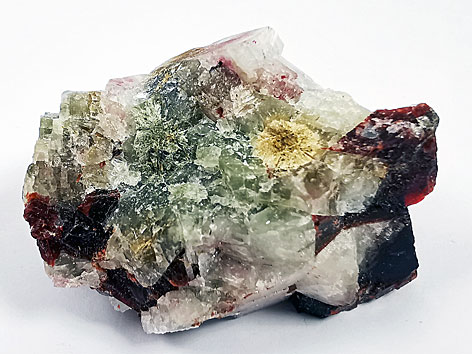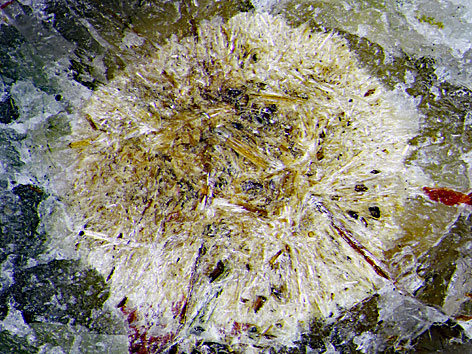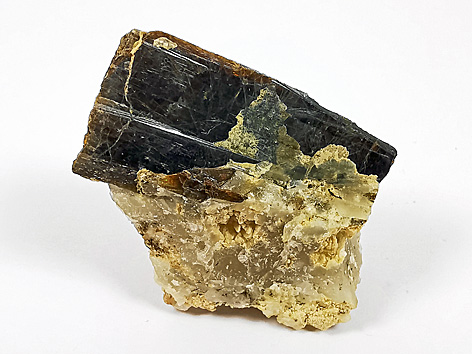
Barytolamprophyllit xx in Matrix mit Villiaumit u. a.
Mt. Koashva, Chibiny, Kola-Halbinsel, Murmansk, Russland
Stufe: 4,3 x 2,8 cm

rundes strahliges Aggregat aus Barytolamprophyllit xx
Detail der links abgebildeten Stufe

Barytolamprophyllit-Kristall
Inagli Massiv, Aldan, Sacha, Russland
Stufe: 3,2 x 3,1 cm